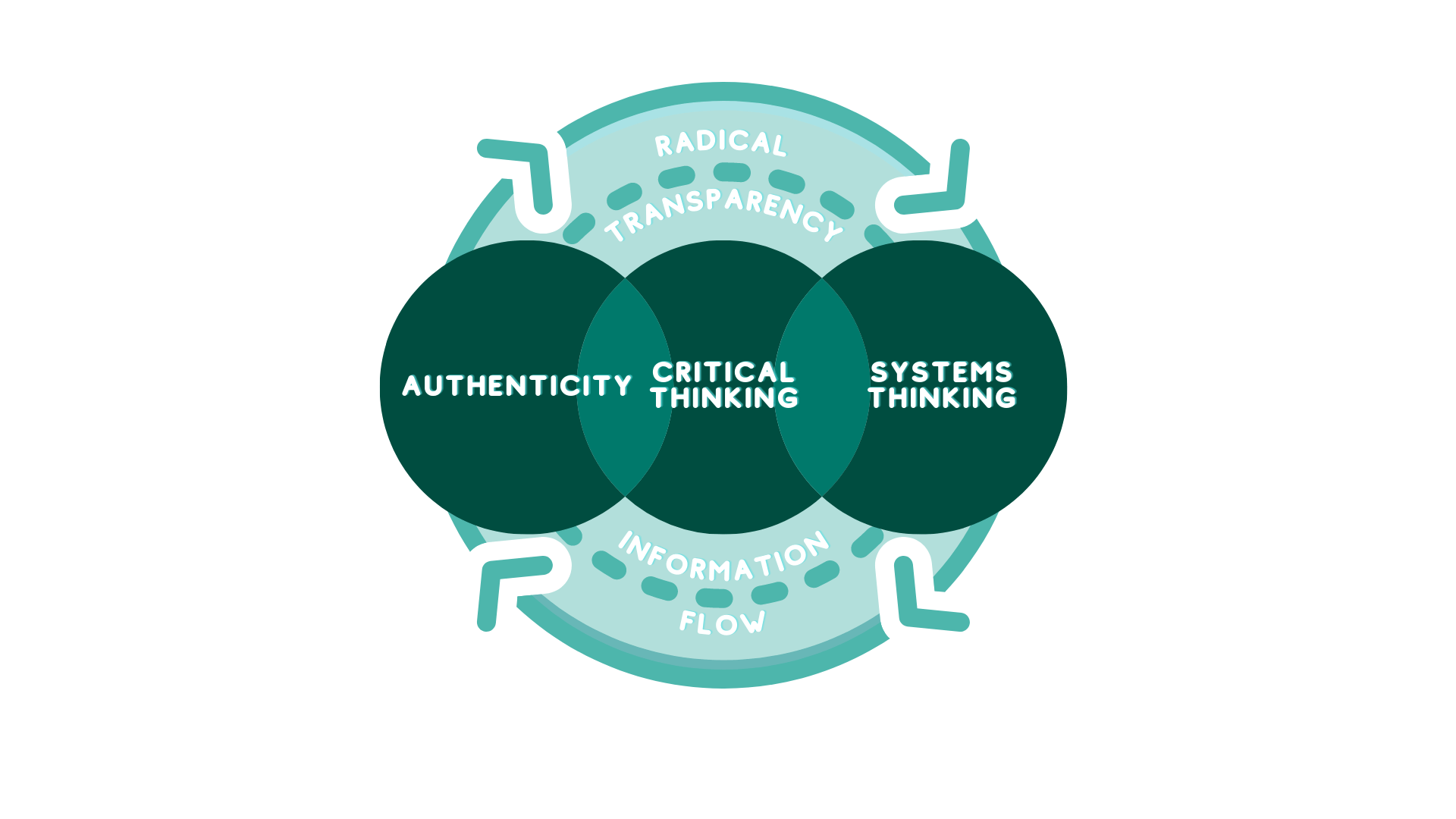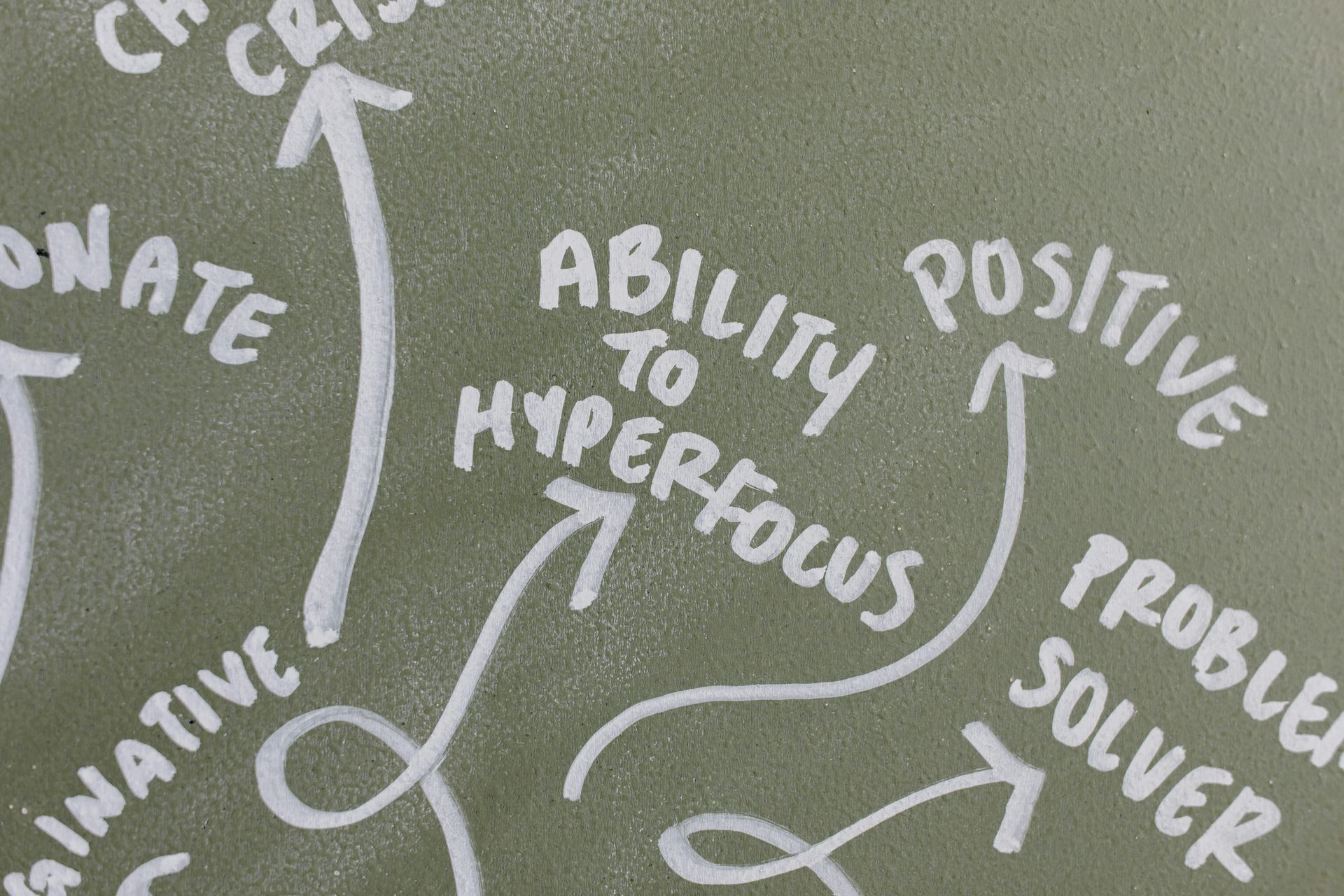How to Fix Information Flows and Build a Collegial Culture
The Landscape of Organizational Behavior
The approach to corporate culture depends on the model of organizational behavior sponsored by management. Plenty has been written about the four basic models - autocratic, custodial, supportive, collegial.
A broader view of corporate culture is a shift from command-and-control methods of work to horizontal leadership. Within the horizontal leadership model, a manager is not a traditional boss - management becomes a distributed function within a pool of mutual accountability. This, does not negate the need for great leadership but emphasises the need for systems thinking.
In this article, we describe two critical path steps required to embed systems thinking into the DNA of organizations if you are trying to move away from the command and control structure.
Start How You Intend to Finish
Corporate culture transformation initiatives are intended to deliver an effect of flipping the magnetic field from negative to positive. Most would agree that the bi-polar balancing act only creates stress.
Find yourself on this map off autoctractic vs collegial behavior, and start the transition how you intend to finish:

Benefits of a Collegial Culture
Organizations shaped by autocratic and custodial models are influenced by all the traits of top management - these are copied down, both good and bad.
The nature of a collegial organizational behavior model is about peer-driven mutual accountability - a system where no single individual or agenda can hijack the organization, or a particular team. This does not mean abandoning leadership or failing to set ambitious goals. This is the new age management paradigm whereby the best manager is the one who can manage him/herself out.
The collegial culture is defined by an “environment” with minimal politics and reduced waste on unimportant things. This approach is the secret sauce for resolving all fundamental issues related to culture:
- leaders will have more time to develop a deeper vision
- employees are enthusiastic because they are treated like adults
- the organization is more likely to come up with interesting problems to solve
Operational benefits of a collegial model are the reduced drag coefficient and greater talent retention. Strategically, you are removing limits on competitive advantage by the means of a real-time inspect-and-adapt.
The Single Most Important Change
The worst change strategy is to double-down on patterns that drove you to where you are today. In the context of cultural transformation, such patterns are:
- tickering with org structure
- top-down messaging intended to deliver transparency
- “kudos” systems
- employee engagement surveys
Given that the collegial model is defined by partnership and self-actualization, legacy operational HR strategies will not work. Successful transformation requires a new and bolder approach that focuses on three fundamental factors:
- authenticity of feedback loops
- critical thinking
- systems thinking
In an employee-management partnership environment, critical thinking and systems thinking capabilities are a result of a healthy multi-directional, and flat, information flow. For instance, there would be systemic factors preventing mutation of information as it flows from the grassroots, to team leader, to senior executives, and then back. Therefore, the key to successful culture is the higiene of flow information.
By resolving the issue of unadulterated information flow, organizations will find themselves naturally operating within a collegial organizational behavior model.
Leadership Factors Influencing Information Flow
“It ain't what you don't know that gets you into trouble. It's what you know for sure that just ain't so” - Mark Twain.
Executives have to triage opinions in order to distill information into factual data points. Key challenge is that teams, more often than not, feel that their perspectives and feelings are mutated (perhaps whilst navigating through some challenging negotiation process).
In a traditional behavior model, executives and HR hold town halls to deliver a crafted message in order to educate and “be transparent”. In a collegial model, leaders hold town halls for the purpose of a celebration, or a joint acknowledgement of inability to affect circumstances - e.g. conversation is a result of executives reporting on the outcome of something that employees are already enthusiastically aware, and trust that their perspective did not get mutated in decision making process.
The reality check on this academic proposition is the fact the world outside company boundaries is far from collegial. Therefore, senior executives will always bring enough surprises to the team. However, internal horizontal partnership culture will ensure that trust between employees and management is never eroded. Under traditional model, trust is always eroded over time, no matter how large the information mutation may be.
Irrespective of the model, leaders will be subject to Richard Feynman’s challenge - "the first principle is that you must not fool yourself and you are the easiest person to fool."
- Leaders need to be armed with context aware information (in the form of major data points and persistent trends)
- Leaders must not misinterpret their function of protecting the team - one cannot simply take away the pain if systemic issues are persistent (pain management is not protection)
- Leaders should be careful when over-trusting “battle-tested” friends for check and balance - anyone can be wrong
- Leaders should remember that a single ‘no’ can be worth thousands of ‘yes’s’ - 75% of people tend to be conformists and won't openly challenge a company's strategy.
How to Resolve Information Flow Issues
Information flow should be comprised of contextually aware, measurable data points that represent unadulterated reflections made by employees. This type of information flow goes well beyond the traditional “kudos” posts. Similarly, surveys are not suitable for facilitating a stream of information - points of view will always be skewed by bias and time-dependent.
The choice of information flow pattern is pre-determined by the acceptance criteria associated with the collegial model - partnership, self-actualization and self-discipline. Radical transparency is the solution for these criteria because it stands for real time and transparent stream of reflections with immutable out of the box insights available to all employees. The only extra consideration is psychological safety.

Start with Authenticity
Modern organizations need to adapt to information flow being multi-directional and asynchronous. This is the result of distributed and remote-first teams. It is a fact of life that no leader can be everywhere at once. Also, it is pretentious to expect that any employee can just knock on the door of the CEO. Yet, the leadership and employees need to experience “the real” each other.
Success of the collegial model is dependent on "the real you":
- Managers need to learn how to be vulnerable
- Employees need to learn how to relay experience in way that forms actionable data points and revealing trends
Radical transparency is the mechanism for knowing how each party behaves in a stressful situation and deals with complexity. The real gotcha here is that there is no real longer term alternative. If you do not support radical transparency, then employees simply descend into water-cooler, behind-the-back and effectively unmanaged opinion forming groups. Companies with such cultures become dinosaurs - e.g. lose talent and competitive advantage overtime.
Transparency is not an "educational" process. Instead, it is the process of climbing the mountain during which all team members, irrespective of seniority, drop their mask. Earning authenticity credits is much more important than capturing kudos points.
Systemic transparency helps the parts to see the whole. It is important to reduce reliance on discrete surveys because they leave room for bias and a veil of secrecy. This statement is not intended to rubbish surveys as they are useful when used appropriately and sparsely.
Evolve Critical Thinking Together
As a segway from authenticity, employees within the enterprise should be able to question anything. Ritualized agile, periodic surveys and complaints systems are the least effective mechanisms for steering culture.
By choosing the oath of real-time, measurable and immutable feedback exchange organizations create a pattern and culture of critical thinking (as opposed to a periodic hurd-and-shepherd type of event).
Evidence-based change is the holy grail desired in all organizational behavior models. However, only the collegial culture can deliver the full promise. This is due to relatively low bias and the removal of barriers to challenging preconceived notions and scrutinizing with new evidence and understanding.
The Holy Grail of Collective Systems Thinking
Thoughts and feelings, that traveled through the authenticity filter and survived the test of critical thinking, enter the universe of systems thinking - “the process of viewing the world and reality in terms of interconnectivity and synthesis rather than only singling things out and analyzing merely through deduction”.
Only collegial answers the question why “autonomous, self-organizing teams don’t work” (Michael K Sahota). Modern organizations and startups should focus on enabling inter-related responsible teams - e.g. focus on how power is shared through decisions.
Learn more about complimenting HR platforms with a turn-key ready transparency solution.



